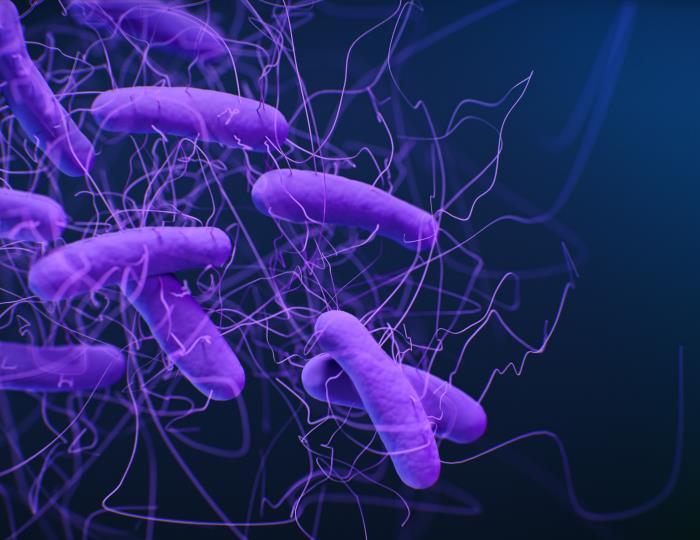Over the years, several therapeutic options have been available for wound and burn treatment. The urgent need for better strategies to accelerate treatment leaves more scope for therapeutic improvement in this field.
Cellulose is one of the most naturally occurring polymers from renewable sources. Occurring in the form of a linear homo-polysaccharide it consists of β‐d‐glucopyranose units linked by β‐1,4 glycosidic bonds. In modern times, bacteria is one of the commonly used sources for producing cellulose also known as bacterial cellulose. Recently, experts have been playing around with the idea of bacterial Nanocellulose (BNC), cellulose constructed using nano-engineering.
Bacterial nanocellulose matrix has outstanding mechanical and physical properties courtesy of its unique 3D structure. BNC aggregates to form long fibrils, providing room for high elasticity, surface area, and resistance. Such intrinsic characteristics make it the best choice for wound dressings or protecting injured tissues. It does help that BNC is also non-carcinogenic, non-toxic, and biocompatible.
Bacterial nanocellulose in wound healing:
It is well known that the largest organ of the body is skin. In its native state, the skin is usually dry and acidic in nature. Altered skin integrity is usually caused by systemic factors such as nutrition, among others. When an individual suffers from serious skin damage due to an accident or disease, a complex series of the biological processes are involved in restoring the lost skin.
A perfect wound dressing must be able to retain moisture and allow oxygen exchange accelerating healing time and preventing infection. Experts consider BNC to be one of the most suitable materials for wound treatments due to its characteristics such as favorable mechanical properties, chemical purity, and water-absorbing capacity. BNC in its natural state has consistently shown great capacity to stimulate wound healing. To further improve the healing effect of BNC, the material can be combined with natural additives such as proteins, glycosides among others, to improve the mechanical strength and cellulose-based dressings with antimicrobial properties.
Incorporating mesenchymal stem cells into bacterial nanocellulose:
One of the recent strategies to improve BNC wound dressing is the incorporation of mesenchymal stem cells (MSC) in the matrix. MSCs are adult pluripotent stem cells that are expected to integrate into the victim’s tissue and promote regeneration of the damaged tissue.
Several studies prove that MSC can evolve into various cell types including muscle bone and cartilage. They have a great capacity to self-renew while maintaining its integrity, an essential feature needed to improve the wound healing process, and inducing re-epithelization of the wound.
Genetically engineered bacterial nano cellulose:
Genetic engineering of the BNC is currently being explored with an aim to optimize the properties of the matrix and the cost-effectiveness of the manufacturing process. Previously, strain improvement was performed through the transfer of BNC related gene determinants to a previously prepared “cell factory” organism. This was done to produce a heterologous expression of genes.
Recently a study used a small RNA (sRNA) interference system to improve the native cellulose production path. The constitutive production of the BNC was shut off to prevent any mutants, a common phenomenon in a well-aerated environment. This was replaced by expression vectors to functionalize BNC with specific proteins, by fusing the genes encoding the protein of interest to the short nanocellulose binding domains.
Challenges and Future Directions:
Using nano engineering in the field of tissue engineering has opened up a lot of new prospects. Experts are looking to develop BNC based out of commercial 3D printing materials, as an alternative to the chemical products such as resins, synthetic thickeners, and plastics, Another added advantage of 3D printed BNC is the possibility of creating flexible and adjustable dressings. The option of 3D printed nanofiber based bacterial cellulose can also offer an opportunity to develop wearable biomedical devices as sensors and drug-releasing materials, to monitor the patient’s wounds constantly.
Another interesting discovery on the works is the creation of transparent wound coverings using nanocellulose. This discovery will allow optical real-time monitoring of wound healing and help in diagnostics of viral infections and inflammations in chronic wounds.
In conclusion, although BNC has made substantial progress in the field of tissue engineering, one of the common drawbacks is the non-degradability of nanocellulose in human organisms. This could potentially lead to scar formations and other complications when intended for direct use. However, artificially constructed skin can be used for experimental studies, such as metabolism, and vascularization of skin tissue.
Currently, there are no materials yet to be found that can fully capture the intricates of the native tissue to restore function at an ideal level. The remaining challenge will be to innovate new composite materials using nanoscale engineering to produce fully biomimetic tissues. As the complexity of applications increase, an active remodeling of the existing scaffolds will be required.

